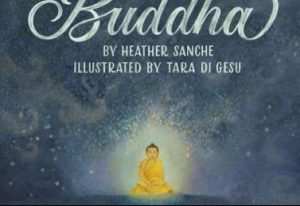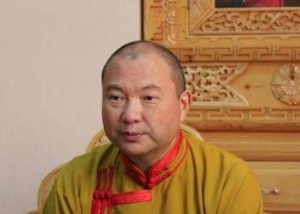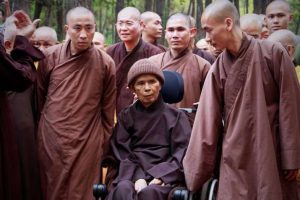
Core of Culture will offer an exceptional new workshop course, “Journey Through the Dance of Form,” online each Sunday from 3 November–1 December. The series will feature creative technologist Chelley Sherman, a computational artist and theorist, in dialogue with me, as the director of Core of Culture, dedicated to endangered embodied wisdom arts.
Chelley’s advanced work in non-ordinary states of consciousness has put her at the forefront of digital design as well as new approaches to understanding the processes of consciousness and self-emergence. She is a senior designer at the Sphere Las Vegas. More than that, she is a practitioner of the Yuthok Nyingthig lineage of Vajrayana Buddhism, and of South American entheogenic traditions.
Chelley’s spiritual practices deeply inform her creative and research work, allowing her to explore emergent phenomenology by integrating ancient wisdom with modern inquiry, and further distilling it as consciousness and experience.

“Journey Through the Dance of Form” provides an opportunity to present basic concepts, shapes, and forms from ancient Asian wisdom traditions in light of contemporary discoveries in science and computational mathematics, identifying parallel states and patterns between old and new, finding universality in the culturally specific, and divining a new idea of what “ground of being” undergirds modern science and ancient self-cultivation. An emphasis on pure form infuses the history of techniques, combining form and consciousness. The wisdom traditions represent practices whose forms play a role in the transformation of consciousness: Vajrayana monastic cham dance, Newar charya nritya dance, Dzogchen and Togal meditation, Daoist Pure Form charts and ritual cipher scripts, Hindu tantric painting, and Japanese Noh theater.

In fact, it was my own work in Japanese Noh, in London, for a post-graduate thesis at the Laban Centre of Movement and Dance under Dr. Peter Brinson, where I first used Complexity Theory to define a pattern of emergence, which I then demonstrated was the pattern of hana (Jp: flower) in Noh, the expressive means to produce a transcendent state in performance. The concept of hana was refined and applied to Noh by Zeami, the world’s earliest dramatic theorist. This similarity between scientific and artistic theories indicated a kind of natural universality to the expressive potential of Noh. In the paired documents below, you can see a seven-stage pattern of emergence, as defined by Complexity Theory on the left, and its manifestation in Noh performance on the right.
Expanding on this observation of a shared reality between science and performance, our new workshop bridges ancient traditions, advanced interdisciplinary sciences, and art to explore how various forms—from embodied practices, yogic dances, and meditation rituals to computational models and emergent systems—reveal the invisible structures that shape reality. By examining how these diverse elements weave and morph across time, and across physical, biological, and energetic domains, we illuminate the patterns that give rise to our conscious and sensory experiences. The ancient and the contemporary are joined in mutual illumination.

Chelley Sherman’s artistic process lends itself to integrated research into meaning, such as this collaboration with Core of Culture, which represents the ancient, embodied wisdom arts. In her own words, Chelley’s works “draw viewers through noetic perception and symbolic representation to connect to a higher dimensional order of understanding, inviting them to explore the profound depths of consciousness and the fundamental nature of reality.” This is also how I would describe the action of a medieval Japanese Noh play.

Through the expressive medium of computation, Chelley leverages concepts such as annealing, optics, fluid dynamics, and agent-driven behaviors to evoke the ineffable essence of consciousness and its multifaceted expressions in the physical and metaphysical realms. This practice connects to a broader sense of vastness and the fluid, ever-changing nature of perception. It inspires patterns of creation and expressive cosmologies.

Over the years, Chelley’s portfolio has expanded to include acclaimed virtual-reality installations. She was named the United Nations Women’s Global Film Festival featured artist. Her work has also been featured in important multimedia festivals SXSW, Nuit Blache, and Mutek. Chelley’s contributions to the development of real-time systems at Sphere Las Vegas, as well as her Emmy Award-nominated immersive films, have been highlighted in Time magazine as “pioneering advancements in technology,” and join her collaborations with NASA’s Jet Propulsion Laboratory as admired works. What an occasion to have Chelley Sherman join Core of Culture in an illustrated conversation on form and consciousness!

Endangered forms of dance, ritual, and meditation die out like animals do, go extinct like eco-systems do. What is their relevance today? What can be distilled from them as the world further evolves? Are there universal lessons, practices, appreciations that we need to embrace now? By elevating these forms from the subconscious to conscious awareness, participants will discover over the course of the workshop how to use these models as tools to actively engage in transforming their own way of thinking and being. From the timeless paintings of tantric adepts, to the computational reveries of Chelley Sherman, “Journey Through the Dance of Form” promises an array of stunning images designed to uplift and transform consciousness. Please join us for a robust and mind-expanding exercise.

Click here for details of the workshop course “Journey Through the Dance of Form.”

See more
Related features from BDG
Mystical Dances in the Kingdom of Bhutan, Part 1: A Black Magic Dance at the Core of Bhutan’s Founding
Stick Dance, Devil Dance, Part 1: The Rockettes
Stick Dance, Devil Dance, Part 2: Dance Lineages of Bhutan














